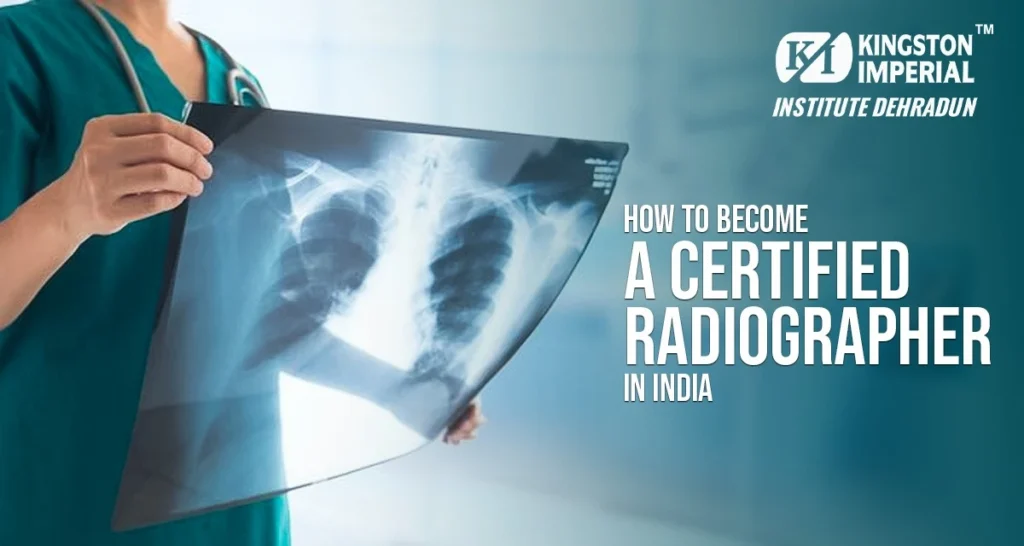
Radiography is a fulfilling and effective career because it incorporates medical education with modern imaging technology in a bid to aid the proper diagnosis and treatment. You are probably asking yourself how to become a certified radiographer in India, and the path you need to take is the appropriate education, training, and certifications.
Radiographers are critical to the healthcare sector since they make use of X-rays, CT scans, and MRI machines under the supervision of experts. The field has good career opportunities since the number of qualified experts required in hospitals and diagnostic centres is on the rise. The first step to being a certified radiographer in India is knowing the qualifications, eligibility, and career path.
Tips to become a radiographer in India
Here are some of the tips regarding how to become a certified radiographer in India. If you are also looking for the same, then do have a look at the tips mentioned below.
1. Complete Your 10+2 with Science
The first stage of becoming a radiographer is by completing your 10+2 with Physics, Chemistry and Biology, or Math. The foundation of science is also required since radiography encompasses medical and technical skills. This is a qualification that qualifies you to apply to diploma or degree courses in radiography.
2. Select the right course of radiography
Students may choose either a Diploma in Radiography, a B.Sc. in Radiography, or a Bachelor of Radiologic Technology (BRT) after 12th. Degree programmes are 3-year tailored programmes that offer more knowledge and improved career opportunities, whereas diplomas offer faster access to the field. The choice of the course will be dependent on your career objectives and time investment.
3. Meet Eligibility Criteria for Admission
Most institutes in India require at least 50% marks in science subjects for radiography courses. Other universities carry out entrance exams, and others use merit to admit students. Make sure that you satisfy the requirements and make sure that you prepare long before, because competition for good colleges is normally high in this area.
4. Gain Practical Training Experience
Radiography is a practical career and requires practical training. You will have the practice of using X-ray, CT, and MRI during your course. Practical experience in hospitals or diagnostic laboratories can assist you in acquiring real-world experience and is sure to leave you confident and employment-ready upon finishing your studies.
5. Gain a Bachelor’s Degree to Have a Better Scope
Whereas diplomas enable you to join the profession sooner, a Bachelor’s degree in Radiography gives you more opportunities. It gives a detailed understanding of imaging procedures, radiation protection, and patient care. In reputed hospitals and diagnostic centres, employers usually favour candidates with a bachelor’s qualification as compared to diploma holders.
6. Get Certified by Recognized Authorities
To be licensed as a radiographer, certification is the key. Having finished your course, you need to enrol in bodies such as the Paramedical Council or the State Medical Faculties. Your certification also confirms your competencies and makes you legally eligible to practise, enhancing your ability to get hired in healthcare organisations, whether private or government.
7. Specialize in Advanced Imaging Techniques
The specialisation you can undertake to advance in this profession is in the field of MRI, CT scans, ultrasound, or interventional radiology. Specialisations will increase your market value because healthcare facilities will never fail to seek the services of qualified professionals trained on advanced diagnostic imaging procedures and technologies.
8. Develop Strong Technical and Communication Skills
Other than technical expertise, radiographers have to deal with patients, communicate with them, and make them comfortable during scans. It is also important in effective communication skills, empathy, and patience. A combination of technical knowledge and soft skills would make you a successful person and a reliable specialist in hospitals or diagnostics.
9. Keep updated on technology
Medical imaging technology is continually changing, and new machines and safer methods are being added. It is advisable as a radiographer to keep abreast with workshops, training, and further education. Staying up-to-date with the current trends keeps you afloat and gives patients the utmost level of care and safety.
10. Explore Job Opportunities in Healthcare
After certification, radiographers will be able to operate in hospitals, diagnostic laboratories, cancer treatment facilities, or even research facilities. In India, the demand for qualified radiographers is on the increase, and provides a career opportunity that is stable and rewarding. Once experienced and specialised, you can also make a transition into teaching, administration, or higher research in healthcare.
Sum up!
Radiography is a good career option that students who love healthcare and technology can consider, becoming certified to work in India. The process begins by completing 10+2 in science and then a diploma or degree, practical training, and official certification. As the need to offer diagnostic services increases, radiographers are very important in patient care and medical accuracy.
Such a job is stable and respected, and it is also characterised by constant possibilities of enhancement due to specialisation and higher education. With the right course, experience, and keeping up to date, you can have a rewarding and influential career as a certified radiographer.

